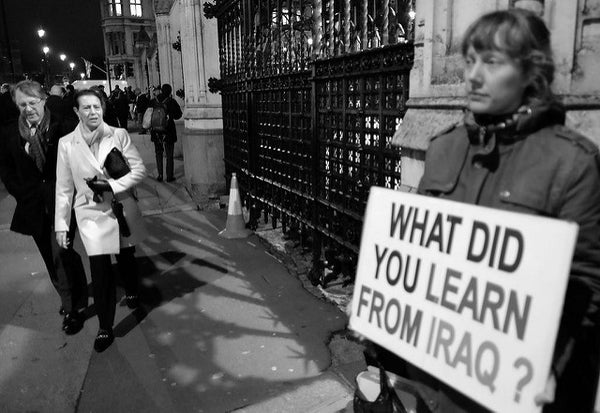This article was published in Scientific American’s former blog network and reflects the views of the author, not necessarily those of Scientific American
Food shortages may have been a contributing factor and a deliberate tactic in Syria’s multi-faceted and complex ongoing conflict. A paper recently published in International Affairs examines the emergency food relief response and suggests it may be contradictory in nature--having far reaching political implications despite claims of neutrality and worsening the conditions it intends to alleviate.
José Ciro Martínez, a doctoral candidate at the University of Cambridge co-authored the paper with Brent Eng, an independent analyst based in Jordan. Together, they conducted over 100 in-depth interviews with humanitarian workers, local volunteers, and Syrian stakeholders between 2013 and 2015. Martínez and Eng found aid workers distinguished political intent, which they criticized, from political impact, which was only rarely and reluctantly acknowledged.
Whether it is to overthrow Assad or undermine the Islamic State, governments and other foreign actors intervening in Syria have clearly stated goals, explains Martínez. In contrast, the authors observed those involved in humanitarian intervention discussed their work in a different language--one that emphasized neutrality. Drawing on Séverine Autesserre’s work on frames, Martínez and Eng used what they call a frame of neutrality to better understand how humanitarians conceptualize their intervention.
“The big overarching argument is that the frame of neutrality depicts food as apolitical. Once food is seen as apolitical, going and feeding people is seen as a humanitarian endeavor where no one wins and no one loses since you are purely feeding someone,” explains Martínez. However, he notes, “Food is eminently political and much can be lost when it isn’t viewed through that lens.”
On supporting science journalism
If you're enjoying this article, consider supporting our award-winning journalism by subscribing. By purchasing a subscription you are helping to ensure the future of impactful stories about the discoveries and ideas shaping our world today.

Involvement in Afghanistan and Iraq left many weary of engagement in foreign affairs but food aid is often perceived to be a more benevolent form of intervention. Photo by Alisdare Hickson.
Despite aims of neutrality, the authors found that food aid was frequently diverted to areas held by the Assad regime. Sometimes this was done as a compromise or due to safety and logistical issues; in other instances, there have been accusations of organizations maintaining close relationships with the Syrian government.
Abdulrahman Omar, a pediatrician from Hama overseeing primary health care centers for the Union of Syrian Medical Relief Organizations, blatantly explained the dynamics, “The world is either ignorant or ignoring the issue that the Red Crescent in our country is political and has an agenda. The Red Crescent in Syria is the government.”
A diplomat who spoke under the condition of anonymity said that food aid may have only reached 250,000-300,000 of the nearly 2,000,000 civilians in rebel-controlled and hard to reach regions the United Nations projected to assist following the passing of UNSC Resolution 2165--meaning that only fifteen percent of emergency food relief was received by its intended recipients.
Whether intentional or not, the channeling of aid to government-held areas has had an impact throughout the conflict. The provisioning of food by humanitarian organizations alleviates the government of some of its responsibilities and the decreased expenditures allows them to use funds typically allotted for welfare on military-related expenses. The presence of food and other aid may also convey an image of security in comparison to areas held by rebels. This, in turn, may decrease the legitimacy and support of rebel groups. It may have an impact on migration, with citizens moving into government-held cities not out of allegiance to the Assad regime but to obtain basic needs. An inadvertent effect of this, Martínez tells me, is that there were cases where rebels were hesitant to attack places knowing their families had moved there.
“A key element in the frame of neutrality is that it is undergirded by this idea of emergency,” says Martínez. “We don’t mean to argue that Syria is not an emergency because clearly it is but what we do want to ask is whether food deliveries and food more generally should be bereft of a political lens just because it is an emergency.” Focussing mainly on the element of urgency or suddenness associated with emergencies may distract from the conflict’s broader picture--obscuring contributing factors, homogenizing aid recipients as a group of victims valued for their biological life rather than their political voices, and depoliticizing solutions by viewing them in terms of efficiency of distribution methods and reaching target numbers.
Still, the paper’s authors think there is a space for humanitarian aid but that the focus should extend beyond reaching target numbers of distribution; they also see a need to begin asking critical questions about who is benefitting from the food aid, how local citizens perceive it, its impact on prices in local markets, and how it alters local governance.